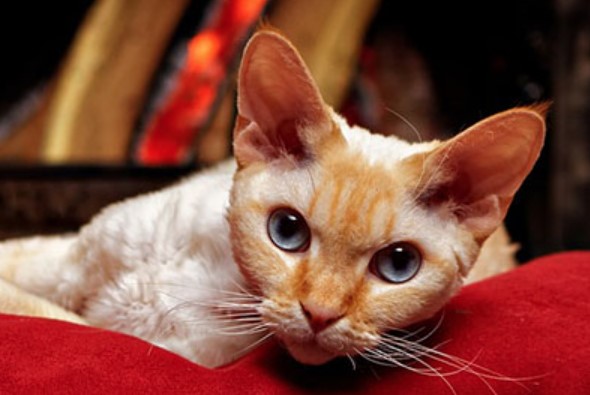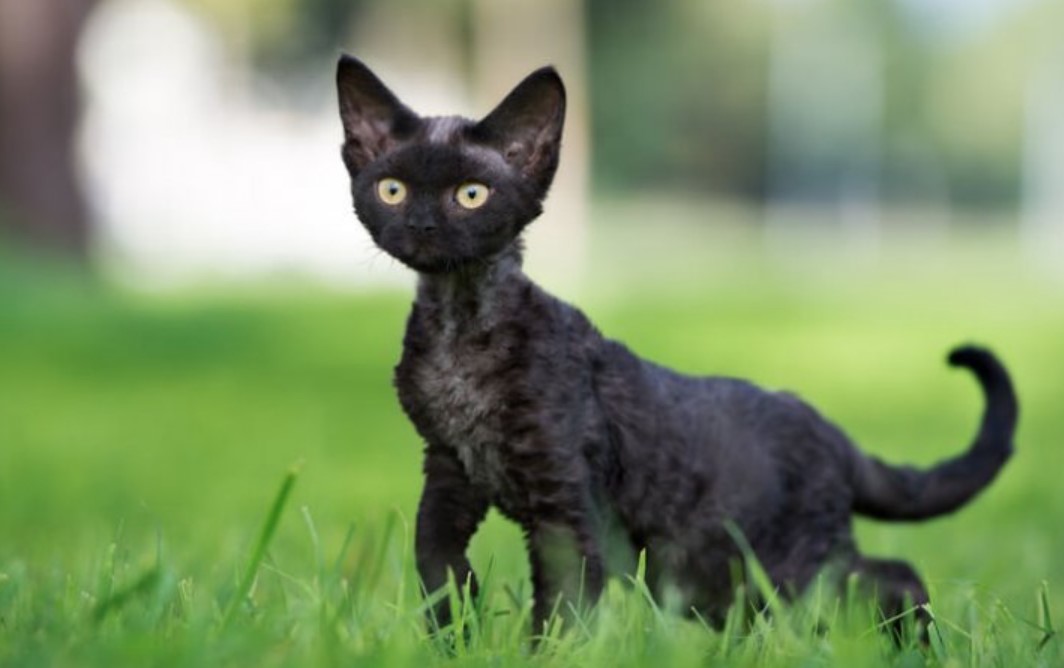The Devon Rex cat belongs to the group of Rex cats, which are particularly easy to recognize by their curly short or long hair. In addition to Devon Rex, the group of Rex cats also includes Cornish Rex, German Rex, La Perm (long-haired), Oregon Rex, Bohemian Rex (long-haired), Selkirk Rex (long-haired) and Ural Rex. These pedigree cats are often also referred to as curly cats.
Size: small
Weight: cat 2.5-3 kg / 3.5-4.5 kg
Life expectancy: max. 20 years
Physique: Very lean, lean and muscular
Coat colors: All colors are allowed
Peculiarities in appearance: Waves and curls in the fur due to gene mutation
Breed type: shorthair breed
Country of origin: Great Britain
Recognized cat breed by WCF, GCCF
Typical diseases of the breed: Spastic paralysis and dental problems occur more frequently
The nature of the Devon Rex

Devon Rex cats are very friendly and very affectionate. Even Mrs. Beryl Cox was impressed by the gentle nature of her cat “Kirlee”. Like “Kirlee”, modern-day Devon Rex cats love human company and are willing to “chat.” They are generally easy-going, but can also assert themselves very well and show off their fiery temperament.
They are also very intelligent and extremely curious cats who want to explore and experience everything. However, don’t expect a gentle lap cat. Devon Rex cats love exercise, play and fun with their owner or with another animal – preferably with a conspecific. A Devon Rex breeder once described his pets as: “A cross between a cat, a dog and a monkey”. – This is how you can imagine a Devon Rex.
Appearance

With an average weight of 2.5 to a maximum of 4 kilos, the Devon Rex cat is one of the smaller cat breeds. Her slender, elegantly shaped body is muscular and remarkably firm. She has graceful and long legs, with the hind legs being set significantly higher. The tail is long, very thin and tapers towards the tip. Unique is their goblin-like head with huge ears, a broad skull, slanted eyes and pronounced cheekbones (unlike Cornish Rex). Their very short curly fur is very fine, as it has hardly any top hair and consists exclusively of undercoat. All colors and markings are allowed in the Devon Rex breed. Only completely hairless parts of the body are undesirable. Her curled whiskers and eyebrows are also typical.
History and origin

Rex cats with their extraordinarily curly fur have been known since the 1930s. In Germany, the first German Rex cats emerged at this time and cats with this random coat mutation were also reported in Bodmin Moor (England). In the early 1960’s a curly stray tomcat was spotted in a disused tin mine in Barely, not far from Bodmin Moor. One day, a pregnant shorthair cat snuck into Mrs. Beryl Cox’s estate and gave birth to her kittens in her garden. A surprise, because among the litter was a small “dusty-black” tomcat with curly fur. Probably a descendant of the stray from the old tin mine.
Mrs. Beryl Cox fell in love with the little “curly goblin” and named him “Kirlee”. At first she assumed that “Kirlee” was descended from the Rex cats of Bodmin Moor. But it quickly became clear that he was different from all previous curly cats. His head was much broader and his cheeks much more prominent, which – combined with his bat-like ears – made him appear goblin-like. Mrs. Beryl Cox recognized the uniqueness of her tomcat and founded the Devon Rex breed with him. The British Governing Council Cat Federation (GCCF) has recognized the Devon Rex cat as a separate breed since 1967. In 1979 it was recognized by the CFA (Cat Fanciers Association).
Interesting and worth knowing
Advice on keeping the Devon Rex

Due to their pronounced need for human closeness, a Devon Rex cat should only be kept by people who have a lot of time for their loyal soul. The communicative and social cat gets along well with your peers – a playmate is always welcome, if not desirable. Besides, she likes it cozy and warm. She will certainly like a sunny cuddling place and a heated lounger. The energy requirements of a Devon Rex cat (because of the thin coat) are higher than that of other cats. To compensate, a Devon Rex may be given a little more food.
Anyone who is interested in a Devon Rex should have enough space so that they can live out their active and active temperament. A safe trip to the balcony or terrace is desirable. Regular release is even better! Last but not least, you should be tolerant, because she sometimes leaves behind a bit of a mess on her exploration tours. Enough exercise, a tiered scratching post, maybe even home-made cat furniture or a play board are just what the intelligent and energetic Devon Rex needs.





























